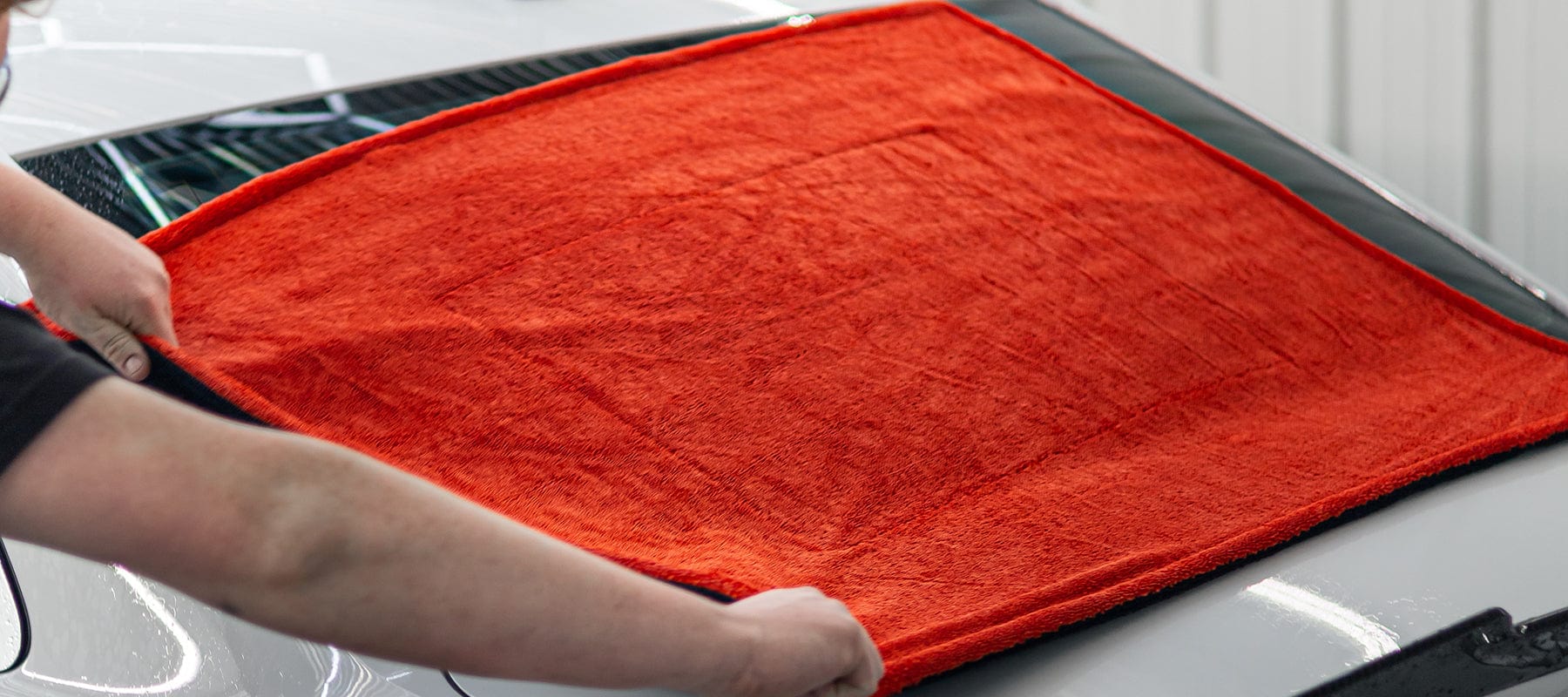
Why Your Drying Towels SUCK—And How to Fix Them
Drying your car should be quick and easy, but sometimes those microfiber drying towels just don’t do their job. Instead of soaking up water, they push it around or leave streaks behind. Sound familiar? If your once-thirsty towels seem to have lost their magic, keep reading. Here are four common reasons your drying towels might be failing—and what you can do to save them.
1. They’re Clogged with Sealant
How It Happens
If you use a detailing product that’s designed to leave a hydrophobic or protective coating on your car—especially those containing SiO₂ (silicon dioxide)—it can also leave a thin, protective film on your towels. This film clogs the microscopic fibers, making the towel repel water instead of absorbing it.
Pro Tip: STOP using your expensive drying towels to buff off sealants or spray coatings. The very product that’s keeping water off your paint could also be “protecting” your towels from water absorption.
How to Fix It
• Solution A: Use smaller, dedicated towels for applying or buffing sealants, and soak them immediately after use. Submerging them in a bucket of clean water and Micro-Restore (1 oz per gallon) right away can help flush out the sealant before it sets.
• Solution B: If the damage isn’t too severe, soak the clogged towels in the same mixture of Micro-Restore and water, for a few days. It can help break down some sealant residue, but results may vary depending on the specific product used.
2. They’re Clogged with Detergent
How It Happens
It’s natural to think that extra-dirty towels need extra detergent. But overdoing the detergent can backfire: if your washing machine can’t rinse all that soap out, the fibers become coated with leftover residue.
How to Fix It
• Solution A: Add distilled white vinegar during the rinse cycle. Detergent is alkaline, while vinegar is acidic, so the vinegar helps neutralize and rinse away leftover soap. This ensures nothing remains in the fibers to hinder absorption.
Remember: More soap isn’t always better. Using just the right amount of detergent (or even slightly less) can help maintain your towels’ absorbency.
• Solution B: Presoak your towels in a mixture of Micro-Restore and Water (up to 2oz. per gallon), and then run the load in the washing machine with only water, and run it a second time with only Distilled White Vinegar.
3. They got Burned in the Dryer
How It Happens
Microfiber is made of polyester and polyamide—both types of plastic. High heat can melt or damage these fibers, rendering your towel less absorbent. Even on “low heat,” some dryers can get hot enough to harm microfiber, especially if the towel stays pinned against the dryer’s drum for too long.
How to Fix It
• Solution A: Use a mesh laundry bag in the dryer. This prevents towels from getting stuck to the hot metal drum and keeps them moving freely.
• Solution B: Opt for “Air Dry” settings, or use only short bursts of low heat. The less time under high temperature, the better. Or hang-dry.
Note: Unfortunately, once a towel’s fibers are melted or burned, there’s no reversing the damage.
4. They’re Simply Worn Out
How It Happens
Microfiber towels don’t last forever. With repeated use—especially when they’re exposed to harsh chemicals, poor washing techniques, or too much heat—they can break down over time. There’s no exact lifespan because it varies with each person’s detailing routine.
How to Fix It
• Solution A: Downgrade the task for which the damaged towels are used, like oil, grease or tar cleanup.
• Solution B: Replace them. When towels lose their ability to absorb, it’s time to invest in high-quality, durable microfiber that can stand up to your detailing habits.
Final Thoughts
Your microfiber drying towels don’t have to “suck” (or worse, not suck up water). By adjusting how you use them—especially around sealants, detergents, and dryers—you can extend their lifespan and keep them at peak performance. If all else fails and your towels are truly toast, it’s a sign to upgrade to fresh, high-quality microfiber. After all, a good towel isn’t just a detailer’s luxury—it’s a necessity for a clean, pristine finish.


Leave a comment